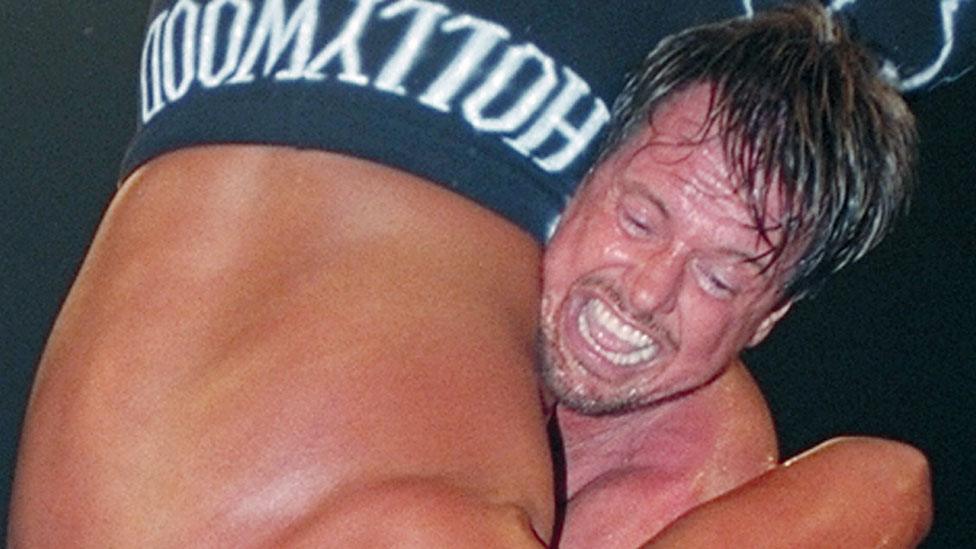Big Daddy to Toni Storm: The revival of British wrestling
- Published
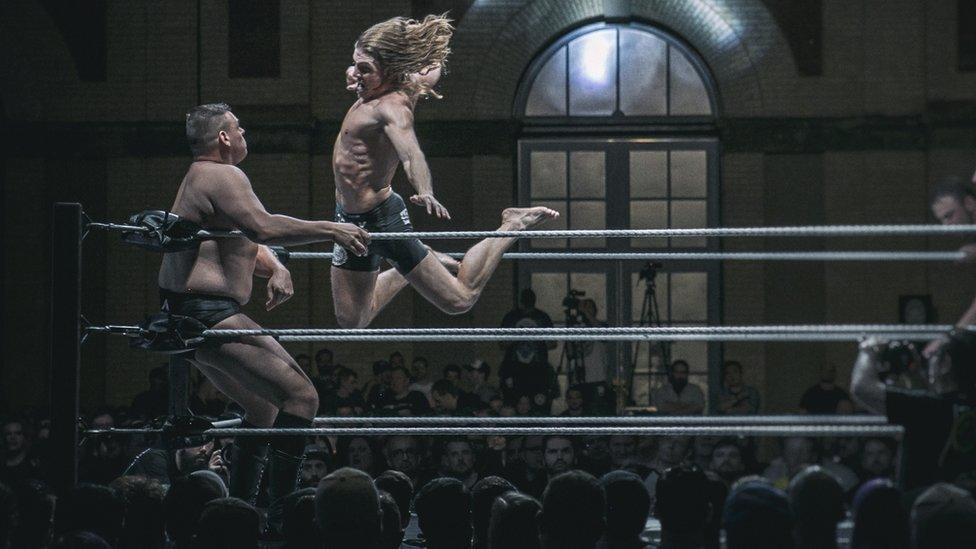
For many a sports fan, Saturday afternoons were spent watching Big Daddy grapple with Giant Haystacks. But when wrestling on TV was axed, the popularity of the sport in Britain took a nosedive. Decades later and a generation that grew up glued to World of Sport is spearheading a revival - but will it stick?
In an era when there were just three TV channels - unless you fancied watching the Open University - the choice was between BBC One's Grandstand or World of Sport on ITV.
At four years old, Jim Smallman opted for the commercial channel because it screened bouts of British wrestling.
"I genuinely hated Big Daddy," he remembers. "But there was a wrestler called Johnny Saint, and the way he wrestled was brilliant.
"He was all about escapology and did these technical, complex holds, turning people [practically] inside out.
"When I first saw him it blew my mind."

Wrestling promoter Jim Smallman says his shows have "compelling characters and compelling storylines"
British wrestling was already popular in the mid-1950s, but when the sport hit the nation's TV screens the following decade it found a new audience.
Millions of viewers would tune in to see the likes of Adrian Street, Kendo Nagasaki and Klondyke Kate, then head to draughty town halls to see them in person.
Fans were known for their passion and while the "faces" (the heroes) were lauded, the "heels" (the villains) took the brunt of handbags swung at them by angry ringside grannies.
But in 1985 World of Sport was taken off air and the wrestling portion of the programme moved to a less popular time slot, before disappearing altogether by 1988.
When wrestling made its TV return the following year, it was the oiled and muscular stars of the World Wrestling Federation (WWF) - Hulk Hogan, the Ultimate Warrior and Bret "The Hitman" Hart - who were centre screen.
"Terrestrial TV was the shop window [for British wrestling] and the money was in getting customers to the shows," says Dr Ben Litherland, author of Wrestling in Britain: Sporting Entertainments, Celebrity and Audiences.
"The second that was removed, the whole business model fell through. Television was so central to the model that British wrestling had been operating on since the 1950s."
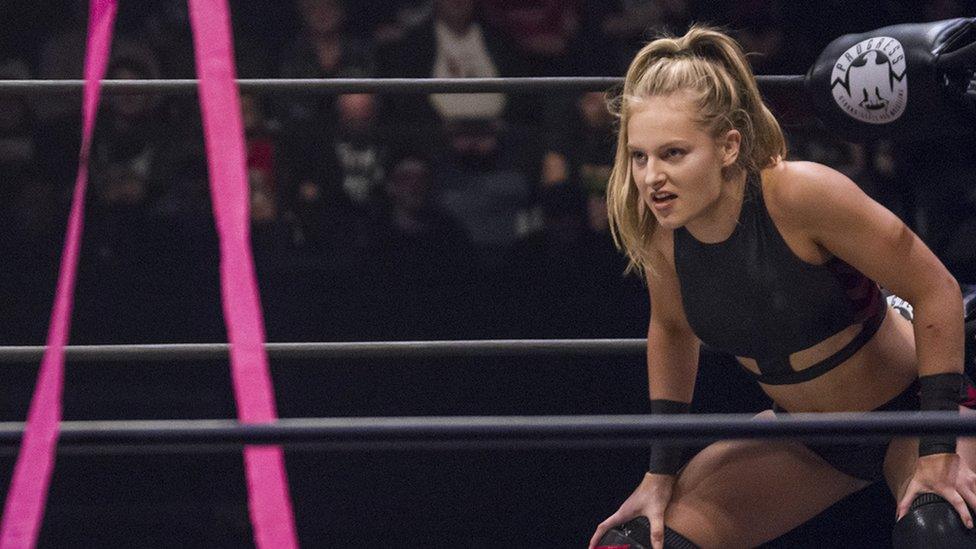
Progress has the hotly-tipped 18-year-old Millie Mckenzie on its roster
Holiday camps such as Butlin's continued to hold wrestling events but by the 1990s "the scene was dying", says Ben, who lectures at Huddersfield University.
"British wrestling still attracted large audiences, but the emergence of multi-channel Sky television, on the one hand, and ITV seeking to adapt its brand, meant that British wrestling was squeezed.
"This happened at the same time as [WWF owner] Vince McMahon was seeking to aggressively expand.
"He had done a good job of creating links with youth programming and Hollywood movies. The WWF was operating pretty sophisticated trans-media storylines in a soap-opera style."
While the melodrama of the US shows kept viewers watching week after week, British wrestling faded from the mainstream sports scene.
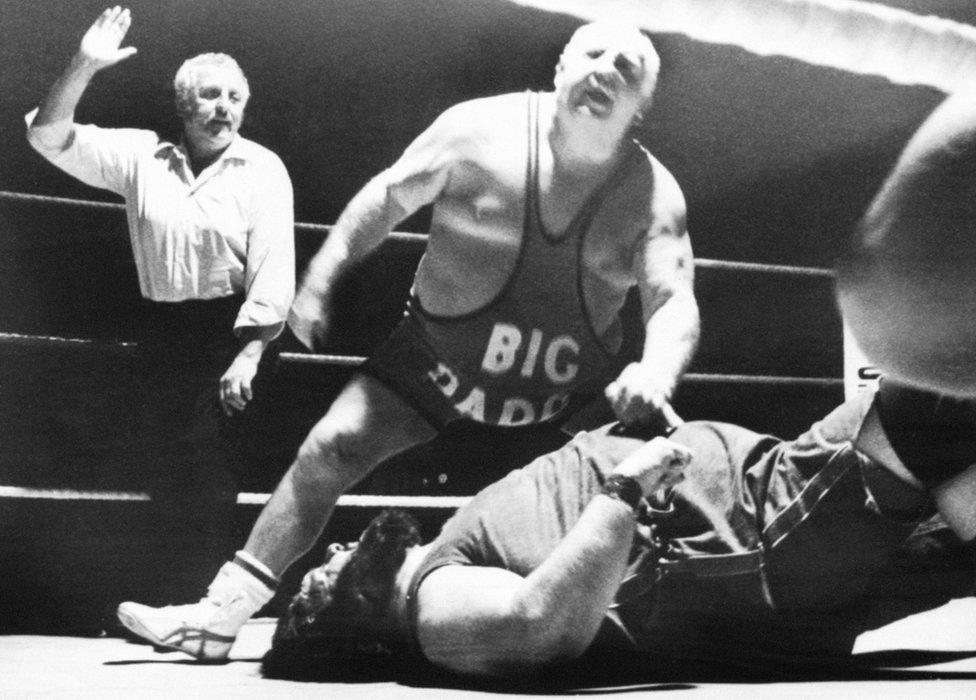
Big Daddy and Giant Haystacks' bitter rivalry enthralled wrestling fans during the 1970s and 1980s
But it never lost its charm for Jim - so much so that in 2012, he and a friend set up Progress Wrestling.
"Wrestling has always been popular in Britain," says the 40-year-old.
"As a nation, we love it, and in the 60s and 70s there were thousands of shows a month.
"But recently there's been this [realisation] that there's great wrestling on our doorstep.
"We started at a time when other [independent] companies were getting big and all of a sudden there was a decent wrestling scene and promotion in most major cities.
"But people need a reason to watch it. Progress wanted to tell better stories so that fans could really get invested in it.
"We wanted compelling characters with compelling storylines to draw people in."
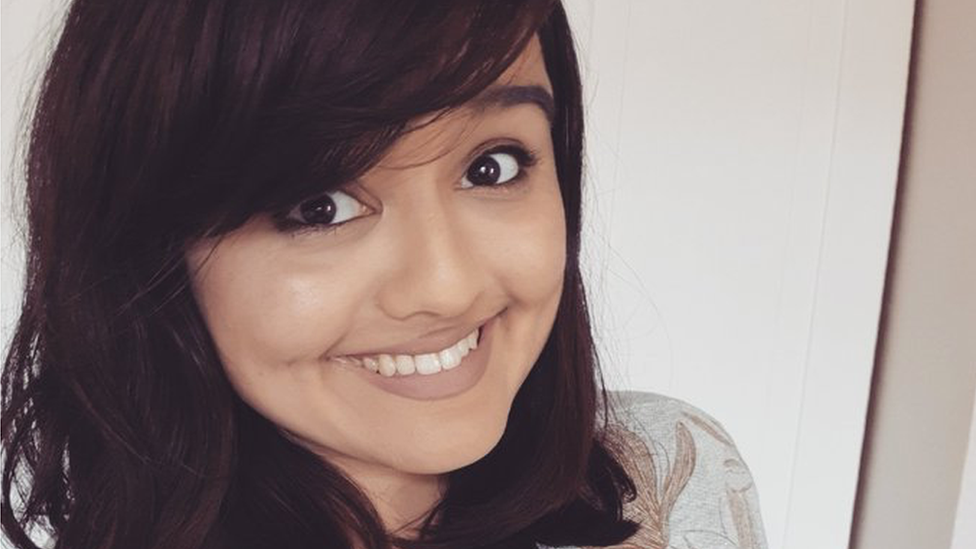
Shirleigh Kaur says she likes the way the wrestlers interact with the audience
One of those people is Shirleigh Kaur, who has been to more than 100 British wrestling shows since 2015.
The 26-year-old primary school teacher says the atmosphere sets it apart from the American shows hosted by what is now called World Wrestling Entertainment (WWE).
"We don't get WWE here very often and when you do it's expensive. British wrestling is affordable and it's near where you live.
"It's a lot more entertaining than what you see on TV; the [wrestlers] aren't afraid to be interactive with the audience.
"At Progress shows, they're throwing themselves at you and that's part of the appeal. I usually sit in the front row, dead centre, and it's a thing where wrestlers throw themselves at me - they give me little hints and I have to get out of the way.
"I feel part of it, you can immerse yourself in it a lot more than [being part of] a WWE audience, which is a lot quieter.
"At Progress, everyone's involved and there's cheering and booing, which makes a huge difference."
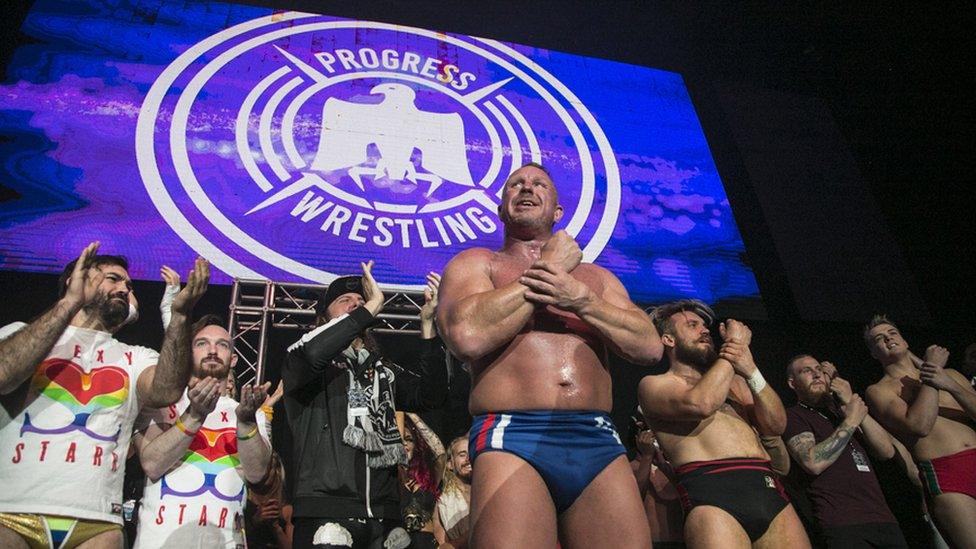
Almost 5,000 people went to Wembley Arena to watch the Progress wrestlers
Writer Carrie Dunn agrees that the DIY grit of modern British wrestling is what sets it apart from the gloss of the US shows.
"It's a fantastic time to be a wrestling fan," says the author of Spandex, Screw Jobs and Cheap Pops: Inside the Business of British Pro-wrestling.
"There's still a place for the grand British panto-style wrestling in holiday clubs, but it now has a more edgy style.
"Promoters host adult-only shows in music venues to fit with its 'punk-rock' identity - it's the extreme end of the spectrum.
"There can be blood; if they're taking a blow, the punishment is real."

You might also be interested in:

In the past decade, a wave of wrestling promoters - such as Fight Club Pro in Wolverhampton, ICW in Glasgow and Attack in Bristol and Cardiff - have sprung up across the UK.
The growing fanbase is in part down to the "slick and media-savvy" owners, Carrie says, who use social media to promote their brands.
"It's played a massive part in making British wrestling grow," says Shirleigh.
"I'm always vocal on social, saying 'you should keep an eye on this wrestler or that wrestler'.
"It's so easy to get a show on the internet and have eyes on it around the world.
"Social media is word of mouth."
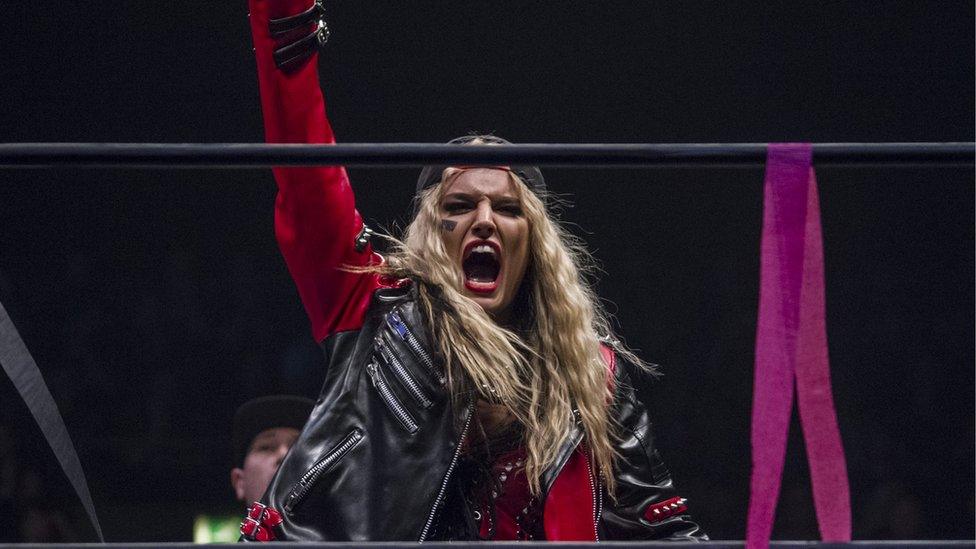
Toni Storm started out with Progress before being signed to WWE
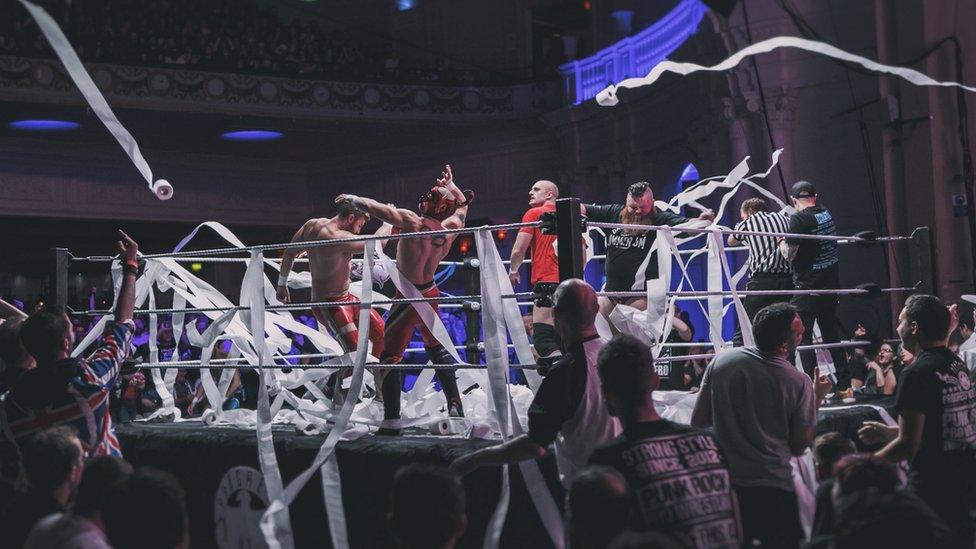
The grit of British wrestling is one of its main draws
For Progress, crowds have steadily grown from 300 people at its first show in 2012 to 2,500 at Brixton Academy four years later.
Jim says his wrestlers have gone from part to full time, with demand for shows seeing performers in the ring six times a week.
"The scene in 2010 was very different," says Gavin Watkins, who gave up his job as a teacher to go full time with the company as Flash Morgan Webster.
"I remember doing shows in Wales where the promoters struggled to get 80 people through the door.
"Now, the same promoters are putting on shows three times a month and getting 300 people.
"Going from that to Wembley Arena, It's absolutely unreal."
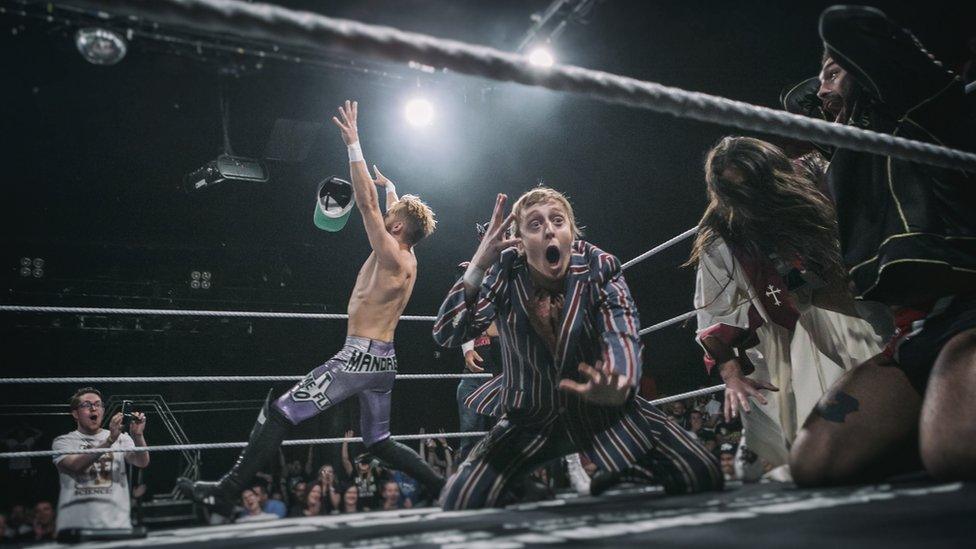
Gavin Watkins, centre, quit his job as a primary school teacher to go full time as Flash Morgan Webster
In September, Progress saw 4,750 fans travel to the London venue for an event - 1,500 more than Jim expected.
It was the best-attended independent wrestling show in England since Big Daddy squared up against Giant Haystacks in 1981 in front of about 5,000 people.
Its success comes after World of Sport's return to ITV over the summer, when 28 of Britain's best wrestlers battled it out over 10 episodes.
Whether the broadcaster will permanently revive the programme is unclear, but its Twitter feed pointed to some success, with 1.2m people apparently tuning in for the debut, external.
But what did the new generation of wrestling fans make of it?
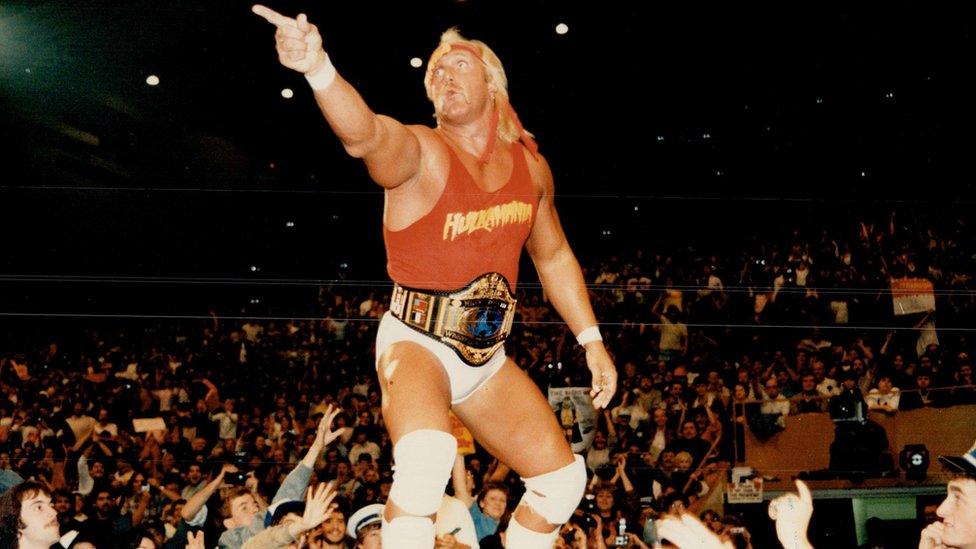
Hulk Hogan dominated headline events for years and was known for his rivalry with the Ultimate Warrior
"It was cool to see it on TV and if you looked online, it was buzzing," says Shirleigh.
"So I think for that purpose, it was successful - to expose British wrestling and get eyes on it.
"My dad asked why I was watching it - asking if Giant Haystacks and Big Daddy were on.
"No," she laughs. "It was good for that era, but it's a lot more advanced now, more varied and technical and acrobatic."
For Jim, however, it's never been about making wrestling "popular" again - to him, it always has been.
"Wrestling has always had peaks and troughs - when I was at university there was a phenomenon of the WWE's 'Attitude' era; before that there was the MTV peak with Hulk Hogan.
"Now British wrestling is fashionable, but it's always been popular with me.
"I thought [at the beginning] we would do a show, lose a load of money and never do one again. Now Progress does a couple of shows a month and goes around the country.
"We got addicted and now we can't stop, but if we did, a lot of people would be sad.
"It will never stop being a big deal to us."
- Published25 April 2018
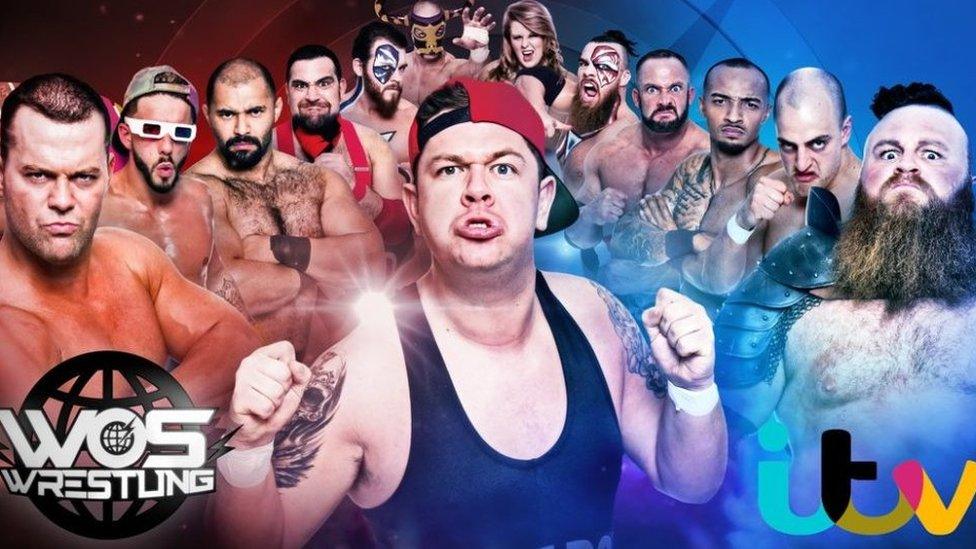
- Published8 August 2015
